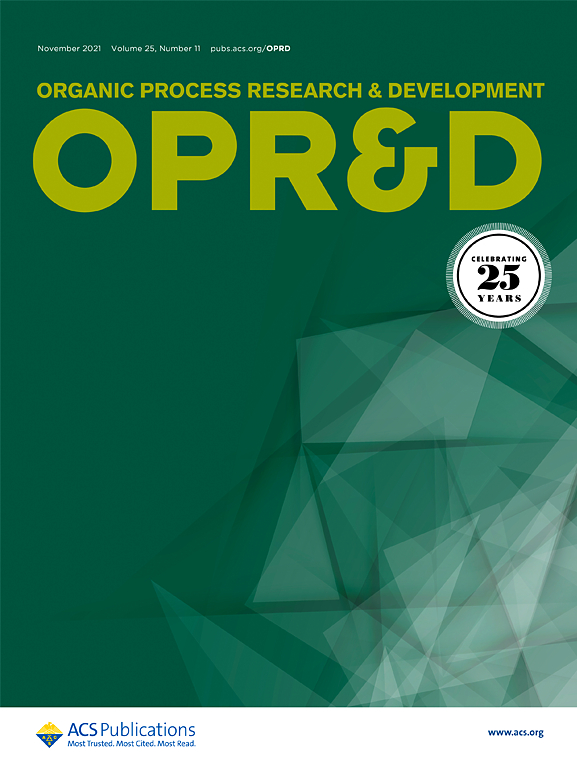通过螯合控制N, o -缩醛的还原性C-N裂解实现丝氨酸和苏氨酸选择性和可扩展的o -烷基化
IF 3.1
3区 化学
Q2 CHEMISTRY, APPLIED
引用次数: 0
摘要
研究了一种选择性和可扩展的o -烷基化方法,用于合成一系列o -烷基丝氨酸和苏氨酸衍生物作为有用的非天然氨基酸。利用具有双连接能力的Ti(IV)物质,使螯合控制的N, o -缩醛中间体的还原性C-N裂解得到相应的o -烷基化产物。此外,n -烷基化副产物在基本条件下选择性分解,并通过萃取和结晶去除,从而消除了大规模合成中繁琐的柱层析过程。本文章由计算机程序翻译,如有差异,请以英文原文为准。

Selective and Scalable O-Alkylation of Serine and Threonine Enabled by Chelation-Controlled Reductive C–N Cleavage of N,O-Acetals
A selective and scalable O-alkylation method has been developed for the synthesis of a series of O-alkyl serine and threonine derivatives as useful unnatural amino acids. The use of Ti(IV) species capable of bis-ligation enables chelation-controlled reductive C–N cleavage of N,O-acetal intermediates to afford the corresponding O-alkylated product. Moreover, N-alkylated byproducts are selectively decomposed under basic conditions and removed by extraction and crystallization, thus eliminating laborious column chromatography processes in scale-up synthesis.
求助全文
通过发布文献求助,成功后即可免费获取论文全文。
去求助
来源期刊
CiteScore
6.90
自引率
14.70%
发文量
251
审稿时长
2 months
期刊介绍:
The journal Organic Process Research & Development serves as a communication tool between industrial chemists and chemists working in universities and research institutes. As such, it reports original work from the broad field of industrial process chemistry but also presents academic results that are relevant, or potentially relevant, to industrial applications. Process chemistry is the science that enables the safe, environmentally benign and ultimately economical manufacturing of organic compounds that are required in larger amounts to help address the needs of society. Consequently, the Journal encompasses every aspect of organic chemistry, including all aspects of catalysis, synthetic methodology development and synthetic strategy exploration, but also includes aspects from analytical and solid-state chemistry and chemical engineering, such as work-up tools,process safety, or flow-chemistry. The goal of development and optimization of chemical reactions and processes is their transfer to a larger scale; original work describing such studies and the actual implementation on scale is highly relevant to the journal. However, studies on new developments from either industry, research institutes or academia that have not yet been demonstrated on scale, but where an industrial utility can be expected and where the study has addressed important prerequisites for a scale-up and has given confidence into the reliability and practicality of the chemistry, also serve the mission of OPR&D as a communication tool between the different contributors to the field.

 求助内容:
求助内容: 应助结果提醒方式:
应助结果提醒方式:


